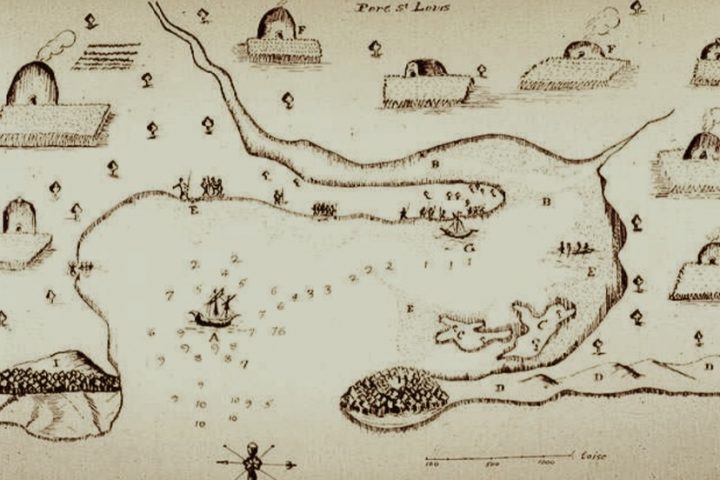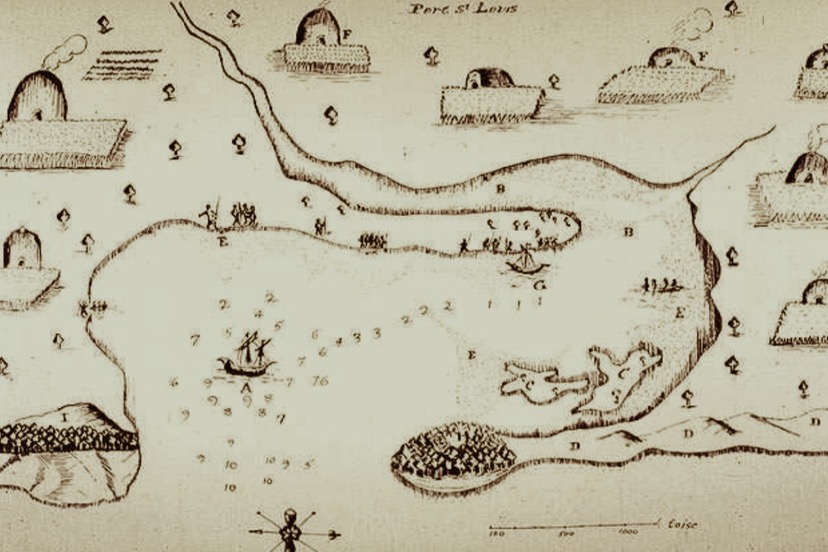When writing his narrative about the English Puritan’s colony in Massachusetts, Of Plimouth Plantation, William Bradford used the word “pilgrimes” when describing his church members’ decision to leave Leiden, Holland and set sail for the ‘New World’ in the ship Mayflower.
So they lefte [that] goodly & pleasante citie, which had been ther resting place, nere 12 years; but they knew they were pilgrimes, & looked not much on these things; but lift up their eyes to ye heavens, their dearest cuntrie, and quieted their spirits.
He appears to have been referencing Hebrews 11:13-16, as translated in the 1611 King James version:
These all died in faith, not having received the promises, but having seen them afar off, and were persuaded of them, and embraced them, and confessed that they were strangers and pilgrims on the earth. For they that say such things declare plainly that they seek a country. And truly, if they had been mindful of that country from whence they came out, they might have had opportunity to have returned. But now they desire a better country, that is, an heavenly: wherefore God is not ashamed to be called their God: for he hath prepared for them a city.
Some might be tempted to view the American continent as that better, “heavenly” country — rather than what seems more likely to be William Bradford’s intended meaning: that the “dearest cuntrie” was in fact God’s heaven above, their true final destination. More than half of the ‘strangers and pilgrims’ who arrived in Plymouth Bay in November, 1620, died over the next few months of an unidentified illness they apparently contracted during the two-month journey across the Atlantic — and thus, may have arrived at that final destination.
True freedom.
But the remaining Puritans had their work cut out for them… building houses, planting corn, fishing, cutting firewood, raising children, studying the Bible.
Although they had intended to land much farther south along the coast, the bay where the Mayflower happened to anchor presented an abandoned village, previously known in the local Wampanoag language as ‘Patuxet’. The Puritans rejoiced at their good luck; the land “hath been planted with corn three or four years ago, and there is a very sweet brook runs under the hillside.”
French explorer Samuel de Champlain had visited this small village in 1605 — 15 years earlier — and had drawn a map showing indigenous homes adjacent to large rectangular fields of corn.

From de Champlain’s diary:
The next day we doubled Cap St. Louis, so named by Sieur de Monts, a land rather low, and in latitude 42 45’. The same day we sailed two leagues along a sandy coast, as we passed along which we saw a great many cabins and gardens. The wind being contrary, we entered a little bay to await a time favourable for proceeding. There came to us two or three canoes, which had just been fishing for cod and other fish, which are found there in large numbers…
When the Mayflower arrived in November, 1620, the village of Patuxet was deserted, and burial mounds dotted the landscape. The newly arrived immigrants soon learned that the previous tenants had died of a gruesome infectious disease.
The following spring, the Puritans finally met some of the surviving local natives. If the colonists thought God was good for guiding them to cultivated land and a sweet brook, they were equally thankful when a native man named Samoset strolled into their midst, smiling and saying in English, “Welcome!”
He explained that the previous villagers had “died of an extraordinary plague.”
A few days later, another native man named Tisquantum arrived, called ‘Squanto’ by the Puritan survivors, and a fluent speaker of English. He had been born in Patuxet, but had been abducted by Englishman Thomas Hunt in 1614 and sold into slavery in Spain — thus missing out on the epidemic that decimated his village. He’d escaped to England and learned the language, and later found passage on a ship back to his homeland.
The settlement leader William Bradford was aware of the death toll from “Indean fever”. His scouts had ventured inland and noted “sculs and bones were found in many places lying still above ground, where their houses and dwellings had been; a very sad spectackle to behould.” It’s been estimated as many as 9 out of 10 coastal natives were killed by the epidemic between 1616 and 1619. The symptoms were a yellowing of the skin, pain and cramping, and profuse bleeding, especially from the nose. A recent analysis suggests the culprit was a disease called leptospirosis, brought to the ‘New World’ by Europeans.
Although the Puritans soon established a ‘mutual protection’ treaty with the neighboring Wampanoag tribe, the long-range outcome of European settlement in the United States ultimately resulted in relocation of most indigenous peoples — those not killed by European diseases — to areas deemed by the US government to be relatively worthless for agriculture. Other US policies included genocide, slavery, abduction of children, endless treaty violations, and attempts to annihilate native culture. The policies were driven mainly by a hunger for the lands historically occupied by native tribes, but were philosophically justified by racist attitudes that viewed the indigenous peoples as “ignorant Savages” — to quote Benjamin Franklin.
These stories of epidemic disease… and immigration… and racism… seem strangely appropriate in the summer of 2020, 400 years after the arrival of the Puritans at the abandoned town originally known as Patuxet.

